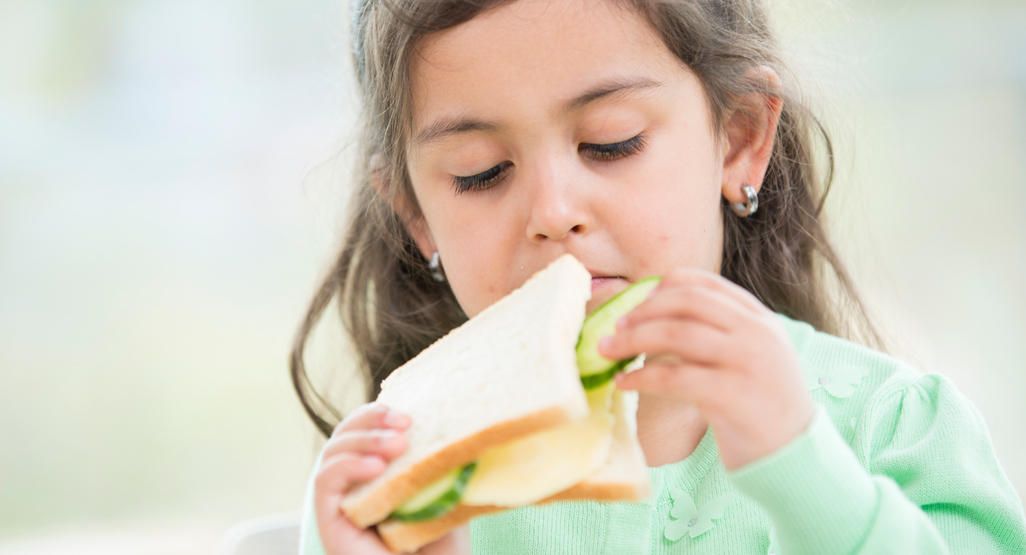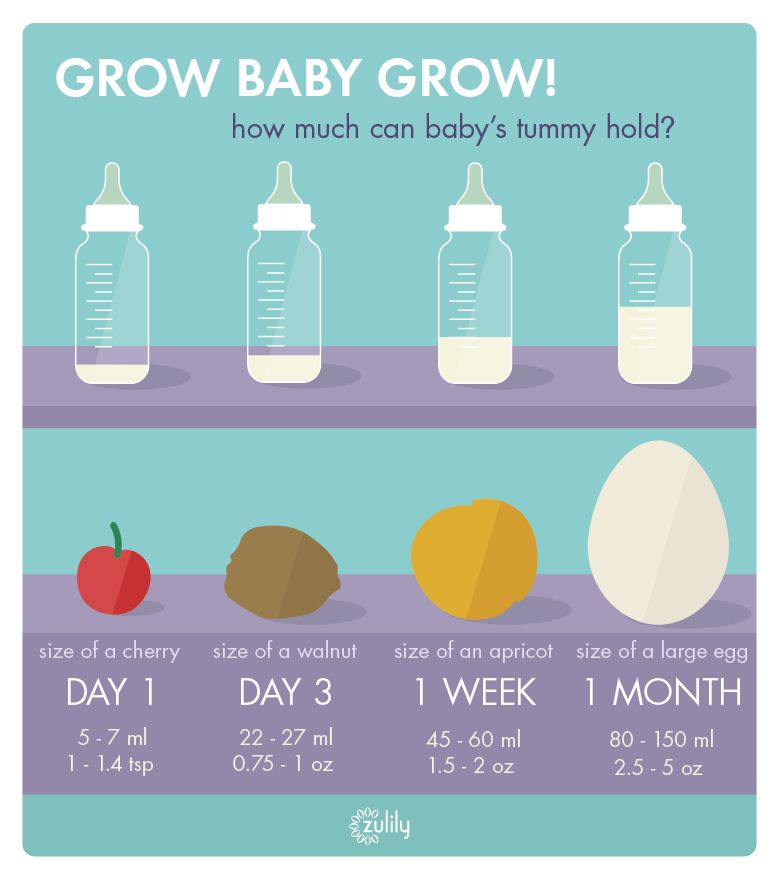What to feed picky babies
Picky Baby Food Ideas
Has your baby been rejecting food at mealtime? If so, you’re not alone. Babies often have highly discerning tastes that may come off as “picky eating.”
Image by Stephen Andrews
The term ‘picky eater’ is often used disapprovingly by parents and caregivers to describe a variety of eating behaviors. Some caregivers have expectations of how much food needs to be consumed by their little one, and label their child ‘picky’ if less food is eaten.
It’s a completely normal behavior for your baby as you help them discover new food flavors and textures. Trying out different foods and textures can help you find what they will eat during these phases.
When picky eating and jags beginPicky eating often shows up around a year of age but may happen sooner. Your baby’s appetite and food intake varies by meal and/or by day. Today’s favorite food is rejected tomorrow, and the preference for only one or two foods, commonly known as food jags, may begin.
Other caregivers experience food jags with their child, where only one or two foods are acceptable and this may be called ‘picky eating.’ Sometimes toddlers just want to be active, and sitting in the highchair keeps them from their preferred play which earns them the ‘picky’ emblem.
Remember that these eating patterns are normal. Your child’s food intake needs depend on their level of physical activity and what their body needs. It’s important to continue monitoring their weight and ask their pediatrician if you have any concerns.
The best defense is to introduce a variety of tastes at a young age to acclimate the developing palate toward adventurous eating.
How you can help baby picky eatersThe most important thing you can do when you perceive your child as being a picky eater is to continue to offer a variety of healthy meals on a regular schedule. The selection of foods offered should also include previously rejected foods.
It’s important to remember that your baby is being introduced to a variety of flavors and developing tastes, and it’s perfectly normal if a food is not immediately accepted.
The worst thing that caregivers can do for themselves and their children is to make food and mealtime a battleground. Mealtimes are meant to be pleasant, and forcing your little one to eat can actually cause him or her to become pickier and eat less.
Likewise, avoid bargaining with your child to take one more bite. They will quickly learn how to negotiate bites of food if the reward is dessert. That is a losing proposition for you both. Also avoid unhealthy options for the sake of getting them to eat as this can cause them to not develop a taste for healthier options.
Accept that your child will eat when they are hungry and they will decide how much is enough. This may be easier said than done. However, if you can stay the course rather than following your toddler around, hoping he will take a bite of something (or anything) you will find yourself in a better place.
Food ideas for a picky eaterTexture and flavor variety
As you’re introducing your baby to solids, they may still prefer purees or liquids alongside or entirely at times. It can be useful to find what soft solid food textures your baby prefers such as banana versus sweet potato or a soft crisp.
It can be useful to find what soft solid food textures your baby prefers such as banana versus sweet potato or a soft crisp.
It can be useful to introduce your baby to one-ingredient solids for 3-5 days. This can help them get familiar with the new foods and allow enough time for them to try it and see if it’s a flavor they really do not like. If they don’t eat enough of the new food, be sure to supplement their meal with their favorite food puree pouch or other meal you’ll know they’ll eat.
Some food flavors and textures to try:
- Banana cut into small pieces
- Chicken chopped finely
- Pasta well-cooked beyond requiring chewing
- Potato cooked and cut into small pieces
- Scrambled eggs cut into bite-size pieces
Test food temperatures
Sometimes babies prefer certain flavors warm and others cold. Your baby may also take to overall warmer foods more than cold or vice versa. It can also depend on their environment temperature. For example, you may want to cool them down on a hot day.
For example, you may want to cool them down on a hot day.
As you’re introducing new flavors and textures, be sure to experiment with food temperature as well to feel out their preferences. This can help you with the success of them taking to current and future foods you try out.
Get your baby’s preferred food staples delivered to your doorPicky eaters will often have a handful of consistent foods that they will eat regularly with no qualms. You just have to discover which ones those are and then keep them on hand to ensure they are eating enough while you help them explore new foods to expand their palette.
You can skip the grocery line and get a wide variety of flavors and textures in convenient baby food pouches sent to your home.
From fruits and veggies to protein-packed foods and dairy-free options, you can find flavors baby will love. And you’ll know that you’re feeding them high-quality ingredients as all Sprout’s foods are organic & non-GMO with no concentrates or preservatives. Discover your little one’s new favorite foods today!
Discover your little one’s new favorite foods today!
Like this article? Share on Twitter, Facebook, LinkedIn
How to Handle Picky Eaters
Do you know a “picky eater”? “Picky” eating is when a child (or adult) refuses foods often or eats the same foods over and over. Picky eating usually peaks in the toddler and preschool years. Many caregivers worry that their picky eater is not getting enough nutrition to grow. But in most cases, they are. Here’s how to handle picky eating in toddlers.
Picky Eating in Toddlers
Picky eating often surfaces around one year—a time when many children are beginning to feed themselves. They can now choose what and how much to eat, giving them some degree of control over their lives. So some days they may eat a lot of everything. Other days they may not seem to eat much at all.
In addition, while children usually grow a lot and quickly in their first year, growth slows down in the second year. Toddlers are also learning lots of new skills, like talking, walking, running, climbing, and more. During a time of great change, children often seek “sameness” as much as possible, including sticking to the same small group of foods. This consistency can help them feel safe and secure during a period of rapid change.
During a time of great change, children often seek “sameness” as much as possible, including sticking to the same small group of foods. This consistency can help them feel safe and secure during a period of rapid change.
Parents also need to be in touch with their own expectations about how much their toddler “should” eat. It is unrealistic to expect a toddler to eat a large amount of food at each meal everyday; after all, a toddler’s stomach is approximately the same size as her clenched fist (Martins, 2002).
Ellyn Satter, MS RD LCSW BCD, a researcher and practitioner in the field of pediatric feeding practices, explains that both parents and children have their own “jobs” to do when it comes to eating. Parents are responsible for providing healthy foods at meal- and snack-times. Children are responsible for what and how much they eat. This helps children learn what it feels like to be hungry and then full—and how to make healthy choices based on this awareness, i.e., eating when hungry and stopping when full.
The Role of Parents
Research has found that parents’ food preferences are linked to their children’s food preferences (Borah-Giddens & Falciglia, 1993). This is probably not a big surprise since we are more likely to prepare the foods that we enjoy, so our children are more familiar with that group of foods than others. Familiarity with foods is key, as a child may need to be exposed to new foods more than 10 times before they try it.
What can you do to help your child enjoy a range of foods?
- Eat a range of healthy foods yourself. Make sure that your own choices are in line with the foods you want your child to eat and enjoy.
- Prepare meals together. Having a hand in making the meal increases the chances that your child will taste her “creation.” Have your little one assist with measuring, pouring, or stirring.
- Avoid showing disgust or disinterest when trying new foods. A study found that mothers who showed (with their facial expressions, body language, or words) that they didn’t want to try a new food had children who also tended to refuse new foods (Carruth & Skinner, 2000).
In short, your young child will probably be less willing to try something new if you haven’t tasted it. And if you are a “picky eater” yourself, then your young child is likely to imitate you in this behavior, just as she imitates the way you talk on the phone or the way you wave good-bye to her each morning at child care.
What to Do About Picky Eating in Toddlers
There are many reasons why a child may be choosier than usual at mealtime. Listed below are some of the most common causes of picky eating and ideas for how to respond. (Adapted from Lerner & Parlakian, 2007).
Some children are sensitive to the taste, smell, or texture of food. You can:
- Offer several healthy food choices—among the foods your child does like—at each meal.
- Gently but frequently offer new kinds of foods. Children need to be offered a new food as many as 10-15 times before they will eat it.
- Track your child’s food sensitivities and keep them in mind when preparing meals.
Does your child have trouble with “mushy” foods? Then offer apple slices instead of applesauce, or a baked potato instead of mashed. If you’d like your child to try a “mushy” food, combine it with a crunchy food that she does like. Give her an animal cracker to dip in the applesauce.
- Talk to your child’s health care provider about any nutritional concerns you may have.
Some children are simply less likely to try new things based on their temperament—their individual way of approaching the world. You can:
- Put new foods next to foods your child already likes. Encourage him to touch, smell, lick, or taste the new food.
- Avoid becoming a short-order cook and preparing special meals for your child. But do make sure that at each meal, there is something he knows and likes on the plate. Also give him what the rest of the family is eating in toddler-sized portions. Over time, these choices will become as liked and familiar as her favorite mac-n-cheese.
- Gently but frequently offer new kinds of foods. Children need to be offered a new food as many as 10-15 times before they will eat it.
- Use healthy dips such as yogurt, hummus, ketchup, or low-fat salad dressings to encourage children to eat fruits, vegetables, and meats.
- Involve your child in preparing the meal (like dropping cut-up fruit into a bowl for fruit salad). Handling, smelling, and touching the food helps your child get comfortable with the idea of eating it.
Some children can seem “picky” because they want to feed themselves. You can:
- Offer safe “finger foods” that your child can feed herself.
- Offer your child a spoon to hold while you’re feeding her. This lets her feel in control.
- Let your child decide where foods go on her plate—the peas there, the turkey there. If you’d like, you can also let your child serve herself (put your hand over hers to help her handle the bigger serving spoons).
Some children are very active.
- Set your child’s meal out before he sits down.
- Keep mealtimes short—10 minutes or so. Let your child get up when he indicates he is finished eating.
- Put healthy foods, such as a bowl of strawberries or bananas, where your child can reach them so when he gets hungry he can easily get to good foods.
Some children have medical issues that make it difficult to swallow or digest certain foods. You can:
- Seek an evaluation by a health care provider. Sometimes children need special help with feeding.
What NOT to Do About Picky Eating
There are two big pitfalls to avoid in order to encourage healthy eating behavior. They include:
Forcing your child to eat. The fact is that forcing children to eat usually leads to the child eating less. Forcing also teaches children to rely on others to tell them how much to eat and what they are feeling. This does not lead to healthy eating habits or good self-esteem. In fact, some research has shown that forcing children to eat actually can make picky eating behavior worse (Sanders, Patel, Le Grice, & Shepherd, 1993).
When it comes to eating, it can be helpful to see it as you and your child each having your own jobs. Your job is to provide your child with healthy food choices and pleasant meal and snack times. It is your child’s job to decide which of these healthy foods to eat and how much to eat. When you approach feeding this way, your child learns to listen to his body and make healthy food choices. It also leads to fewer power struggles between parent and child around food (Satter, 1990).
Nagging or making deals with your child. “Just two more bites, just two more bites!” “If you eat your vegetables, you will get dessert.” Strategies like these don’t work in the long run. Children who learn to make deals about eating quickly learn to make deals and ask for rewards for doing other things—like brushing teeth or getting their shoes on. And soon they won’t do anything unless there is a reward for it!
What About Dessert?
Ah, dessert. Many parents struggle with what to do about sweets. Daniel, father of a toddler and kindergartner, shared his family’s dilemma:
I’m fine with letting them choose how much they want to eat. But after they’ve basically eaten nothing, then they want dessert. I feel like I’m getting taken advantage of if I give it to them. If I try to get them to eat more, it’s worse because we end up negotiating the entire meal: “Okay, if you have 3 more bites of meat, you can have a cookie.” It’s gotten to the point that my 6-year-old will ask at the beginning of the meal, “How much do I need to eat in order to have a treat?”
How do you handle the “cookie cravings” in your little ones who insist they are done with dinner (after 3 noodles) but still have room for something sweet? The following are some ideas for handling this common dilemma.
- Serve a small treat with your child’s dinner (for example, one cookie or a small muffin).
Yes, he may eat it first or he may eat only that. That’s okay. Over time, your child will come to see that sweets are part of a meal, but not the only part. He will get hungry for other foods. Soon, you might even find that he leaves the sweet on the side opting to eat the healthier foods first.
- Serve a small treat at the end of the meal regardless of how much your child has eaten. Again, this teaches your child that sweets, when eaten in moderate servings, have their place. It also takes away the power of the dessert being a big, special reward that they are constantly pining away for. When you avoid negotiating “if you eat this, you get that”, you also eliminate a big power struggle. You may find that your child eats more on his plate as a result.
- Eliminate sweets altogether. Some families believe that cookies, cakes, etc. are not appropriate for their family’s diet. Instead, try offering fresh fruit or cheese to end the meal.
References
Borah-Giddens, J. , & Falciglia, G. A. (1993). A meta-analysis of the relationship in food preferences between parents and children. Journal of Nutrition Education, 25, 102–107.
Carruth, B. R., & Skinner, J. D. (2000). Revisiting the picky eater phenomenon: Neophobic behaviors of young children. Journal of the American College of Nutrition, 19, 771–780.
Gibbs, J. (2006, Jan-Mar). Working with picky eaters: The toddler years. Family and Consumer Sciences Quarterly Media Packet, Michigan State University Extension, East Lansing, MI.
Lerner, C., & Parlakian, R. (2007). Healthy from the start: How feeding nurtures your young child’s body, heart, and mind. ZERO TO THREE: Washington, DC. Available online.
Martins, Y. (2002). Try it, you’ll like it! Early dietary experiences and food acceptance patterns. The Journal of Pediatric Nutrition and Development, 98, 12–20.
Sanders, M. R., Patel, R. K., Le Grice, B., & Shepherd, R. W. (1993). Children with persistent feeding difficulties: An observational analysis of the feeding interactions of problem and non-problem eaters. Health Psychology, 12, 64–73.
Satter, E. (1990). The feeding relationship: Problems and interventions. Journal of Pediatrics, 117 (Suppl.), 181–190.
The article below was also useful background in creating this resource: Cathey, M., & Gaylord, N. (2004). Picky eating: A toddler’s approach to mealtime. Pediatric Nursing, 30(2), 101–109. Available online at: http://www.medscape.com/viewarticle/475189_1
If you are worried or have questions about your child’s growth or nutrition, it is a good idea to talk to your child’s health care provider. Keep in mind, however, that as long as your child is not losing weight and has the energy to play and interact, it is likely that he is eating enough to support his growth.
How to feed a picky child
The baby has a full plate of delicious food in front of him, and he wrinkles his nose: most mothers are familiar with this problem.
When a child does not eat, parents usually act in two ways: either they try to entertain him by telling him fairy tales and including cartoons, or they try to persuade (“Spoon for dad, spoon for mom”, “Until you eat soup, don’t you will receive"). But this doesn't always work either. What to do if the child refuses to eat?
Possible causes of poor appetite
Before taking action, you need to understand the reasons for the cool attitude to food.
1. Lack of appetite in children may be associated with poor health or with the onset of a disease - for example, a common cold. The body accumulates strength to fight infection and therefore tries not to waste its resources on digesting food. In this case, forcing the child to eat is not only useless, but also harmful - it is better to let him drink more liquid.
2. Sometimes the child does not want to eat due to digestive disorders: constipation, nausea or vomiting, abdominal pain and other symptoms do not contribute to a good appetite.
3. Some children refuse to eat when they are forced to do so, regardless of their taste preferences and whether they are actually hungry.
Remain calm
Mothers often find their child's refusal to eat too painful and become too active, creating a stressful situation around food. This can lead to both psychological and physiological problems in the child in the future, up to gastrointestinal disorders or even anorexia. Many parents panic, believing that the child is not getting enough nutrients. How much a baby should eat depends not only on his age, but also on individual characteristics. Therefore, first of all, do not worry and be guided by common sense: a healthy child will still eat when he is really hungry. If the baby's well-being is in doubt, consult a pediatrician.
Five Ways to Feed an Unwanted Child
1. First of all, do not force your child to eat. Neither persuasion, nor threats, and even more so punishment will not bring any benefit - on the contrary. Set the plate aside and send the baby to do his own thing. The main thing is not to let your child snack between meals, and soon the appetite will make itself felt.
2. Involve your child in cooking: let him be not only a spectator, but also a participant in the process. Surely the baby will want to try the salad or porridge that he prepared himself.
3. Serve food interestingly. Connect your imagination and turn the most ordinary, everyday dish into a festive one. Even borscht (appetizing tomato-beetroot color and rich taste will be enjoyed by any mother with MAGGI ® Dressing for borscht seasoning) can be served in an unusual way - in a “plate” of a loaf of Borodino bread or a round rye bun.
Add a game element. Let potato mountains lie in a plate, rivers of sour cream sauce flow, and "spiky" meatballs grow along the banks. Draw eyes, nose and mouth on the cottage cheese casserole with jam - you get a funny face. Make curly cheese sandwiches. Volumetric figures can be cut out of vegetables and fruits.
4. Ask for the child's opinion. Ask him what he would like to eat today and offer several options to choose from. The kid will be pleased to once again show independence.
5. If the child does not like a certain product, try disguising it. For example, almost all children do not like broccoli. One way to save the day is to make muffins with broccoli or “hide” shredded cabbage in spaghetti.
How and what to feed a child?
Good evening everyone! I beg your pardon for the long breaks, but summer is summer. For some reason, I have a lot more classes just in the summer. Today I will write about a topic familiar to all parents: how and what to feed a child. I will especially focus on the “how?” point.
We have our own house, so there is enough work both at home and on the street. Plus, the school holidays have begun, and I try to spend all my free time with the children. In this regard, writing a blog is not yet given to me every evening. How do you not want to just unsubscribe! I want to sit down and write sincerely, with meaning and interestingly.
After all,
everyone understands that it is necessary to feed the child with the most useful.So that he grows strong, healthy, cheerful and cheerful. And everyone, of course, knows that the best food is vegetables and fruits, dairy products (?). I also remember that as a child I was always told: “Eat with bread” and “Bread is the head of everything.”
Is that true? The question is moot.
Now, with my knowledge, it seems to me that "eat with bread" comes clearly from our parents, who never had enough money for everything else that they eat with this bread. Especially in my hungry post-Soviet times with a complete lack of normal products in stores. (Maybe someone remembers the shelves of the butcher's shop filled with canned seaweed?). Therefore, we were taught to eat everything with bread. With him, and satisfying, and cheaper. True, I also remember the contradictory one: "sandwiches are not food." Although I do not quite understand - what's the difference! Soup with bread, or bread with cheese...?
Personally I now have another completely opposite problem in Danish society: EVERYTHING is eaten with bread, or even bread alone. Bread for breakfast with something (cheese and milk as a bite!). Snack at school at 10-00 (sandwich). Lunch: black bread with something on top and vegetables. For dinner again something and again with bread. I still can't get used to this bread literally everywhere! I constantly forget that in addition to a side dish such as potatoes, rice and pasta, my Danish guests must also be given bread and butter for dinner ... There is so much bread everywhere that poor children have no room for anything else in their stomachs!
Don't get me wrong, I'm not against bread. But I am against his dominance. I am against this monotony.
Today, most likely, such a large topic will not fit in one post.
Therefore, I will share my observations. Probably, in addition to the monotony with bread, one of the main problems of modern parents is the monotonous nutrition of the child. Like my son (daughter) does not eat this, this and much more. But he eats ONLY this and that…
| Picky kids |
A familiar boy of 12 (!) years old, visiting his friends overnight, brings food with him! And, as you probably guessed, these are not vegetables and fruits. This is pasta in a creamy sauce with bacon. Just a masterpiece of "healthy eating" called "the death of a nutritionist."
Moreover, in the families where his friends live, they already know this very well, and they try as best they can: they offer to order pizza, or french fries and hamburgers, or make pasta themselves. It's inconvenient! The boy came to visit, but they couldn’t even feed him… At the same time, the boy has younger and older sisters in the family. And this boy's poor mother cooks 2 dinners every night. Pasta, described above, for the boy, and also dinner for all the other 4 members of the family ... At the same time, mom works at a normal job full time. Class! Sorry mom?
No. I don't feel sorry for my mom at all. As cruel as it sounds, it's my mother's fault.
| What to feed the child? |
Another girl: my daughter's friend. 7 years. For breakfast, lunch and snacks at school, he only eats rolls with chocolate. (Danish masterpiece: a bun is taken, buttered, and a specially designed slice of chocolate is placed on top, which can be bought everywhere! Not even at a gas station at night. Apparently, for especially hungry people, this is the most demanded food.
I remember the first time I saw this a miracle of the year after 2 stays in Denmark at breakfast with the family.I look, and next to the cheese and sausage are thin slices of chocolate. Strange, I think, chocolate for breakfast.Nearby was a girl who, in front of my astonished eyes, built herself such a Danish chocolate sandwich. I, stupid, asked her directly: “What are you doing?” She didn’t even understand the question ...
I then shared my impressions with my Russian girlfriends for a long time :-).
Let's go back to a 7-year-old girl. This is how the girl eats. Buns with chocolate. For dinner, however, she recognizes other food. From a series of pasta, pizza and McDonald's. True, her constitution is such that no matter how much she eats, she is very thin. Therefore, I do not think that parents are worried about this. But it's not just about thinness. Even if we forget that she often gets sick, one cannot but remember the main thing: after all, right now a person is FORMING!
My daughter's other friend. There is only pasta, lasagna, pizza and sandwiches.
| What parents can't think of! |
And everything should be WITHOUT tomatoes, cucumbers, lettuce, any vegetables at all, except for carrots….
You can list for a long time what exactly she DOES NOT eat. It's easier to make a list of 10 foods she recognizes. When she dine with us, when she sees other ingredients not on her pasta list, she just doesn't eat at all. Immediately, without trying, he says "I won't."
When my daughter eats at her place, there is no need to even ask what they had for dinner. Everything is as always: options from the list with 10 ingredients. At the same time, mom is trying. But at home there is also a father and an older sister. So they eat pasta mixed with pizza every other day. She also has sandwiches with only 1 type of sausage, only carrots and cucumbers are recognized from vegetables. And so for 3 (!!!) years out of her 7.
She wasn't friends with my daughter then.
Before all these stories, I was terribly worried that my Masha didn't eat spinach and onions…
But after my last birthday, I realized that my struggle was not in vain. I can still quite accept when the child does not eat some vegetables. But at my birthday I was simply shocked: “I don’t like such cakes, I don’t like this cream, but your milk is not like that, and I don’t like red compote, I don’t eat such rolls, and your butter is wrong, chocolate cake — fu…….”
You can continue the topic of how to feed a child endlessly!!!
At the same time, these phrases were not heard from 1-2 girls out of 15. Those who ate more or less WITHOUT nit-picking were at most 5-6 people. After that birthday, I realized that I just need to be happy. Let my daughter not eat, as I did in childhood, radishes and cauliflower, as well as all other vegetables, but she is well done. And without undue modesty I will say - this is still my merit. Just like picky children - the merit of their parents, who allow them all this.
(Now Masha already eats radishes and even broccoli. And she is very proud of herself at the same time :-) Of course, there are vegetables that she does not like. I don't force her now. )
| Picky Kids Epidemic |
Looking at all these many little picks, I come to the conclusion that
in our world is just some kind of epidemic of child indulgence.
At least in food. A bunch of parents who eat pasta and pizza every day. Already, almost no restaurant has a normal children's menu: only french fries, pasta, and further along the familiar list. Many children do not recognize any drinks other than soda and juice. Moms who cook 2 or even 3 dinners every night. You can go on for a long time. Unfortunately.
But maybe we should stop regretting and start acting? Stop being afraid to say "no" to your children? Stop making them little “kings and princesses”?
How?
If you are interested, I share my experience.
Something of my own, intuitive. Something read from smart books. One of them is just on this topic, I recently read: "French children do not spit food," by Pamela Drukreman.
So what exactly did I do to ensure that my children eat normal food?
Here are my rules for feeding a child:
Children should eat the same food as adults.
No baby food. My husband recently said to me: “We have Masha so thin! It's because you barely cook her favorite meals." When I asked what kind of dishes they were, he replied: “French fries, pasta and more ...” (see the list above or look at the children's menu of a nearby restaurant.) So, I told him that I was not going to the next 10 - 15 years of eating "children's meals" just because I have children in my house. Moreover, the weight and height of our children are simply in an excellent ratio :-).
| Eat better together |
No double dinners or lunches.
Once a week, my eldest 6-year-old daughter voices her wishes for the menu. I try to take them into account as much as possible. And so, our menu is from a series of fish dishes 2 times a week, 1 day WITHOUT animal proteins, and on other days - a mix of the remaining food options. While everyone is alive:-)
If someone doesn't like something, or someone doesn't like some ingredient, then it's not necessary to eat it. You can choose and set aside on the edge of the plate. But! It is MANDATORY to try. A small piece, but a must. If it is very tasteless, then I allow you to spit it back. And so every time. At the same time, I put ALL the ingredients from the dish on the plate. If you don't like it, try it and put it aside.
I make sure that children eat first and then drink. Otherwise, they fill their stomach with liquid, and then leave the table hungry. And they will start begging for pieces...
If possible, I do not allow children to bite before dinner.
If there are 2 hours before dinner, then you can eat something healthy like fruit or vegetables, sometimes cheese. If dinner is in 30-60 minutes, then let them endure. They won't die of hunger :-)
If a child says that he doesn't like food and won't eat, I don't force him.
If you don't like it, don't eat it. But I won't run to the fridge to offer everything I can. It’s my husband who loves to feel sorry for them (and they are well aware of this - from whom to ask for pieces :-). Oh, how poor they will go to bed hungry! Yes, they lie down. Today they will lie down, and tomorrow they will understand that it is better not to do this a second time. In the end! A person can survive for 30 days without food! And because of one missed dinner, obviously nothing will happen.
If only parents were so concerned that their children drink water! Without which, by the way, a person cannot live more than 3 days. So calmly, dear parents. No need to panic. In the end, when the child is REALLY hungry, then the stale crust of bread will come off.
Encourage your child to try everything many times.
Only after at least 10 times (!) the child will get used to the taste. And, as a rule, after that he will eat it all with pleasure.
Don't overdo it.
Everyone has periods when they want only tomatoes or only cucumbers. Then it usually changes. Let him eat handfuls of these tomatoes. Children's body (not spoiled) knows what it needs. But! Don't forget to make sure that all the other foods on the plate have been tried. If a child has GENERALLY only tomatoes with bread or rolls with chocolate on the menu, then this is already pampering and parental oversight. We draw conclusions quickly and change the situation.
As simple or complex as it may sound, I want to add an important thing .
Of course, it's never too late to start.
But it is logical not to bring the situation to the point of absurdity , when a 12-year-old child controls you and eats only carbonara pasta... It will already be difficult here. It's best to start as early as possible. Better yet, right away. And you don’t have to decide for the child in advance: children definitely won’t eat olives and artichokes ... How soon they will! My youngest eats both. He does not like pepper, but he will eat olives at least with a spoon.
| Introduce new products gradually to children |
Another secret: don't rush to cook complex dishes with 20 ingredients right away, if you usually have macaroni and cheese. Innovate gradually. Put in the tomatoes first, then the meat and basil, then boil the rice. And then on the rise. From extreme to extreme is always a path to failure.
And at the very end I want to add: even though everything here sounds smart and correct, everything happens in our family. And dad, who after dinner feeds the children with pieces of cheese, and compote instead of dinner, and catching favorite ingredients from the dish.
There are no ideal children and parents.
But the main thing is to know where you are going, to be firm in your intentions, and not to forget about them. Believe me, in the end it will be easier for you and your children. And they will also hurt less. And how much you will save time and nerves, do not even convey!
Really good goals?
Good health to you!
My dears! Thanks for reading. I share valuable information with you free of charge, and I will be very grateful if you share this article on your social networks or leave a comment.











